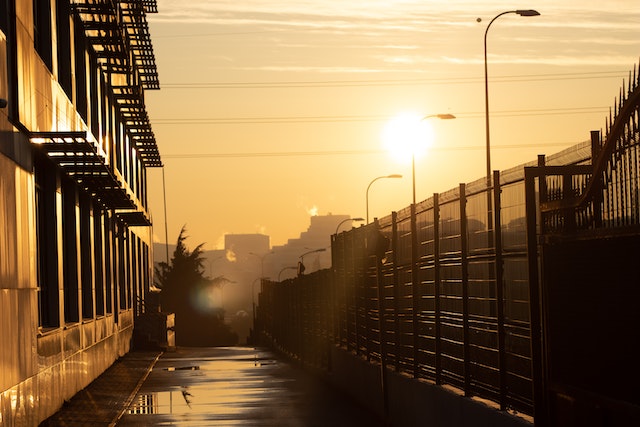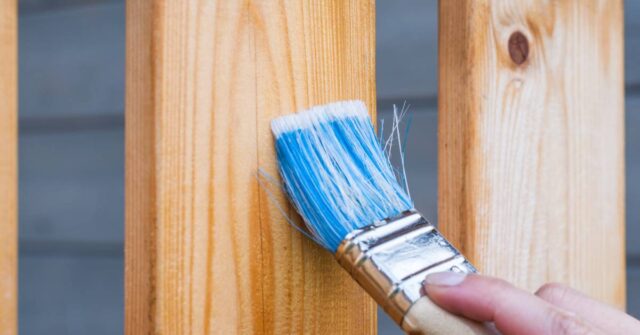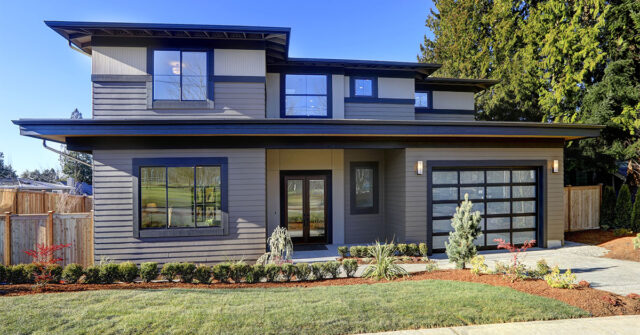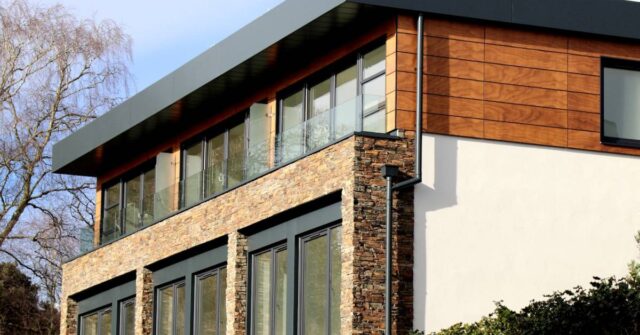Repainting the exterior of your home or commercial property can significantly enhance its aesthetic appeal and increase its market value.
In this comprehensive guide, we provide insights and practical advice on painting different exterior surfaces including wood, brick, and more, tailored specifically for the unique Australian environment.
Understanding the Australian Climate and its Impact on Exterior Paints
The Australian climate varies widely across the country and presents unique challenges for exterior painting.
It’s crucial to understand how weather conditions impact the longevity and finish of exterior paints to ensure optimal results.

The Effects of Sunlight
Australia experiences high levels of UV radiation, which can cause exterior paint to fade, crack, and peel prematurely.
It’s essential to select UV-resistant paint for your exterior surfaces, especially for areas with high sun exposure.
The Impact of Rain and Humidity
Heavy rainfall and high humidity can also have detrimental effects on exterior paint.
These conditions can cause paint to blister, peel and allow the growth of mould, particularly in regions like the tropical north.
Dealing with Coastal Salt Spray
For properties located near the coast, salt spray can lead to accelerated corrosion and degradation of paintwork.
It’s recommended to use marine-grade paints and regular maintenance to mitigate these effects.
Challenges of Temperature Fluctuations
In regions with extreme temperature fluctuations, exterior paints can expand and contract, leading to cracking and peeling. Using high-quality, flexible paint can help manage these challenges.
General Tips Before You Start Painting
Before you pick up a paintbrush, there are some general tips you should consider to ensure a smooth and successful painting process.
Choosing the Right Time to Paint
Generally, it’s best to paint on mild, dry days. In most parts of Australia, autumn and spring are ideal times for exterior painting. Avoid painting in extreme temperatures or when rain is forecast.
Selecting Quality Tools and Paints
It can’t be stressed enough that choosing the right paint can be the difference between a poor job and an amazing one.
Invest in high-quality paints and painting tools for the best results. Better quality paints last longer, provide superior coverage and are often more resistant to weathering.

Safety Considerations for Exterior Painting
Remember to consider safety during your painting project.
Use sturdy ladders, wear protective clothing, and follow the safety instructions on paint cans, particularly when working with oil-based paints or solvents.
Surface-Specific Painting Tips
Different exterior surfaces require different preparation techniques and paint types. Let’s explore these in detail.
Also, don’t dismiss the knowledge from an experienced exterior painter who will be able to help you navigate the large range of paints on the market.
Painting Wood Surfaces
Wooden surfaces are common in Australian architecture, from weatherboards to decks and fences. Here’s how to paint them effectively.
Preparation for Wood Surfaces
Start by cleaning the surface and removing any old, peeling paint. Then, fill any gaps or cracks with a suitable wood filler. Sand the surface to ensure the paint adheres well.
Selecting Paint for Wood Surfaces
Choose a paint that’s specifically formulated for exterior wood surfaces. Acrylic paints are often a good choice as they’re flexible and UV-resistant.

Techniques for Painting Wood Surfaces
Apply primer before painting, then apply at least two coats of paint. Always allow sufficient drying time between coats. Remember to paint in the direction of the wood grain for the best finish.
Painting Brick Surfaces
Brick surfaces are sturdy and long-lasting but painting them requires careful preparation and the right paint.
Preparation for Brick Surfaces
Brick surfaces need to be thoroughly cleaned before painting. Remove any dirt, moss, or mildew, and repair any damage with brick filler.
If the brick is new, wait at least a year before painting to allow for weathering.
Selecting Paint for Brick Surfaces
Acrylic latex paint is often the best choice for brick as it’s breathable, allowing moisture to escape from the brick.
Techniques for Painting Brick Surfaces
Start with a primer suitable for masonry, then apply at least two coats of paint. A sprayer can be useful for covering the uneven surfaces of brickwork.
Painting Concrete Surfaces
Concrete surfaces, like driveways or walls, need special care when painting to ensure a durable finish.
Preparation for Concrete Surfaces
Thoroughly clean the surface and repair any cracks with concrete filler. For new concrete, wait at least a month before painting to allow it to cure fully.
Selecting Paint for Concrete Surfaces
Use a paint specifically designed for concrete and masonry. These paints are designed to withstand the alkaline nature of concrete and provide a durable finish.
Techniques for Painting Concrete Surfaces
Always prime concrete surfaces before painting. Apply at least two coats of paint and allow adequate drying time between coats.
Painting Metal Surfaces
Metal surfaces, such as wrought iron railings or metal siding, need special paint to prevent rust and corrosion.

Preparation for Metal Surfaces
Remove any rust or old paint with a wire brush or sandpaper, then clean the surface thoroughly. Prime the surface with a rust-inhibitive primer.
Selecting Paint for Metal Surfaces
Choose a paint designed for metal surfaces. Some paints include rust inhibitors, providing extra protection for metal surfaces.
Techniques for Painting Metal Surfaces
After applying primer, use at least two coats of paint. Allow each coat to dry thoroughly before applying the next.
Overcoming Common Exterior Painting Challenges
While painting exterior surfaces, you might face several challenges. Here’s how to overcome the most common ones.
Preventing Paint Bubbles and Peeling
These issues can be prevented by preparing surfaces well and not painting in high humidity or hot temperatures. Choose high-quality paint and apply it evenly, avoiding too-thick layers.
Avoiding Streaks and Lap Marks
Streaks and lap marks can be avoided by maintaining a wet edge while painting. Work in manageable sections and blend the edges before the paint can start to dry.
Fixing Uneven Paint Coverage
Uneven coverage can usually be corrected by applying another coat of paint. For severe issues, it may be necessary to sand the surface and start again.
Post-Painting Tips and Maintenance
Once you’ve completed your painting project, there are a few steps you can take to maintain the look and longevity of your work.

Cleaning and Storing Painting Tools
Clean your brushes and rollers thoroughly after use to prolong their life. Store paint in a cool, dry place and ensure the lids are sealed tightly to prevent drying out.
Periodic Inspection and Touch-Ups
Regularly inspect your painted surfaces for signs of wear or damage. Small areas of damage can often be touched up without repainting the whole surface.
Protecting Your Newly Painted Surfaces
Protect your paintwork from damage by trimming back plants and trees, maintaining gutters, and dealing with any leaks or moisture issues promptly.
Conclusion
With the right preparation, paint selection, and techniques, you can achieve a high-quality finish when painting different exterior surfaces.
By considering the unique Australian climate and taking steps to maintain your painted surfaces, you can enjoy the results for many years to come.





